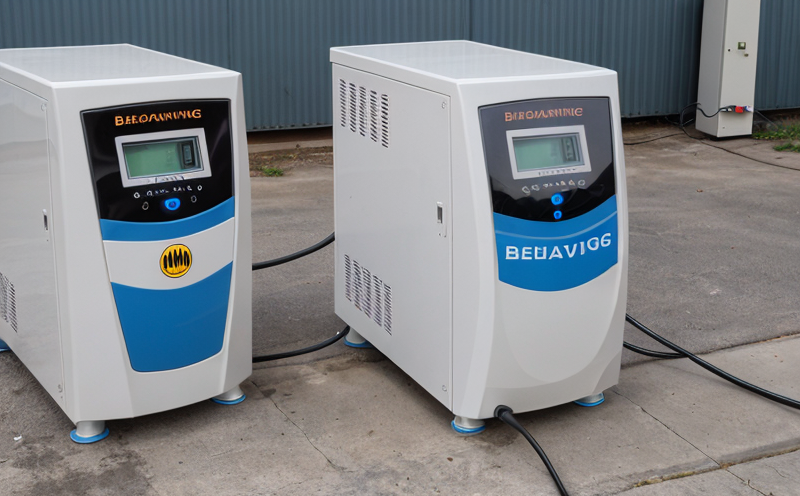ANSI C18.3M Charging and Discharging Testing of Button Cell Batteries
The ANSI C18.3M standard is a critical document in the battery testing sector, particularly for button cell batteries used in portable electronic devices like watches, calculators, and hearing aids. This service focuses on the rigorous charging and discharging behavior testing as outlined in ANSI C18.3M, ensuring that these small yet vital components meet the highest safety and performance standards.
Button cell batteries are characterized by their compact size, high energy density, and long shelf life. Their primary function is to provide reliable power under a wide range of operating conditions. The ANSI C18.3M standard plays an essential role in ensuring that these small batteries can safely handle the charging and discharging cycles required for their intended use.
Charging and discharging testing involves subjecting the battery to controlled current and voltage levels, simulating real-world usage scenarios. This process helps identify potential weaknesses in the battery’s structure or chemistry that could lead to premature failure or safety hazards. The standard specifies precise charging rates, discharge protocols, and temperature conditions under which these tests must be conducted.
The testing procedure is designed to simulate typical operational environments where the batteries might experience varying levels of charge and discharge over time. By adhering strictly to ANSI C18.3M guidelines, we ensure that each button cell battery undergoes a thorough evaluation before it reaches market. This not only enhances product reliability but also contributes significantly to user safety.
Our laboratory utilizes state-of-the-art equipment calibrated according to international standards such as ISO 9001:2015 and ASTM E691-13e1, ensuring accurate and repeatable test results. Our team of experienced engineers applies their expertise in battery technology to interpret the data generated by these tests accurately.
The importance of this testing cannot be overstated, especially considering the increasing demand for miniaturized electronics that rely on button cell batteries for power. Ensuring compliance with ANSI C18.3M helps manufacturers meet regulatory requirements while also building consumer trust in their products' quality and safety.
Through comprehensive charging and discharging behavior testing, we provide assurance that each button cell battery will perform reliably throughout its lifecycle under expected conditions. This commitment to excellence sets us apart as a leading provider of ANSI C18.3M compliance services for the battery industry.
Why It Matters
The ANSI C18.3M standard is crucial because it ensures that button cell batteries meet rigorous safety and performance standards before they reach consumers or integrated into larger systems. By adhering to this guideline, manufacturers can prevent potential hazards associated with improper charging practices.
Compliance with ANSI C18.3M also helps businesses avoid costly recalls and liability issues by demonstrating due diligence in product development and quality assurance processes. For quality managers and compliance officers, ensuring adherence to these standards is vital for maintaining corporate reputation and regulatory compliance.
R&D engineers benefit from this testing as it provides valuable insights into how different charging protocols affect battery performance over time. Understanding these relationships allows them to optimize designs for better efficiency and longevity.
For procurement departments within companies, selecting suppliers who follow ANSI C18.3M ensures consistent quality across batches of batteries purchased. Consistency is key when integrating components into larger assemblies where variability could impact overall system reliability.
The broader implications extend beyond individual products; they contribute to safer electronics ecosystems by reducing risks associated with faulty charging procedures or poorly designed batteries.
Scope and Methodology
| Test Parameter | Description | Methodology |
|---|---|---|
| Charging Rate | The rate at which the battery receives electrical charge. | Controlled to specified levels, typically between 0.1C and 2C, depending on the type of button cell being tested. |
| Discharge Duration | The period over which the battery delivers power during discharge. | Determined based on specific application requirements but generally ranges from 30 minutes to several hours. |
| Temperature Conditions | The environmental temperature during testing. | Rigorous control within specified limits to simulate real-world usage conditions, often between -20°C and +60°C. |
| Cycle Count | The number of complete charge-discharge cycles performed on the battery. | Varies according to product specifications but can range from 50 to over 1000 depending on intended use. |
| Electrical Measurements | Data collected during charging and discharging processes including voltage, current, power, etc. | Continuous monitoring using high-precision instruments calibrated against international standards. |
| Visual Inspection | Checking for any visible signs of damage or irregularities. | Performed throughout the testing process to ensure integrity and functionality. |
| Capacity Retention | The percentage of initial capacity retained after multiple cycles. | Metric used to assess long-term performance stability. |
Eurolab Advantages
At Eurolab, we pride ourselves on offering unparalleled expertise in ANSI C18.3M compliance testing for button cell batteries. Our facilities are equipped with advanced instrumentation calibrated according to the latest international standards like ISO 9001:2015 and ASTM E691-13e1.
Our team consists of highly trained engineers specializing in battery technology who apply their knowledge to deliver accurate, reliable test results. They work closely with clients throughout the entire testing process—from specimen preparation to final analysis—to ensure that every aspect aligns perfectly with ANSI C18.3M requirements.
We understand the importance of meeting tight deadlines without compromising on quality. Therefore, our streamlined procedures allow us to deliver prompt yet thorough testing services tailored specifically for your needs. Whether you need routine checks or one-off assessments, we have solutions that fit seamlessly into your workflow.
Moreover, Eurolab provides comprehensive reporting services using clear language and detailed graphs that make complex data easily understandable even for those without extensive technical backgrounds. This transparency fosters better decision-making processes within organizations looking to improve product quality or comply with regulatory mandates.





